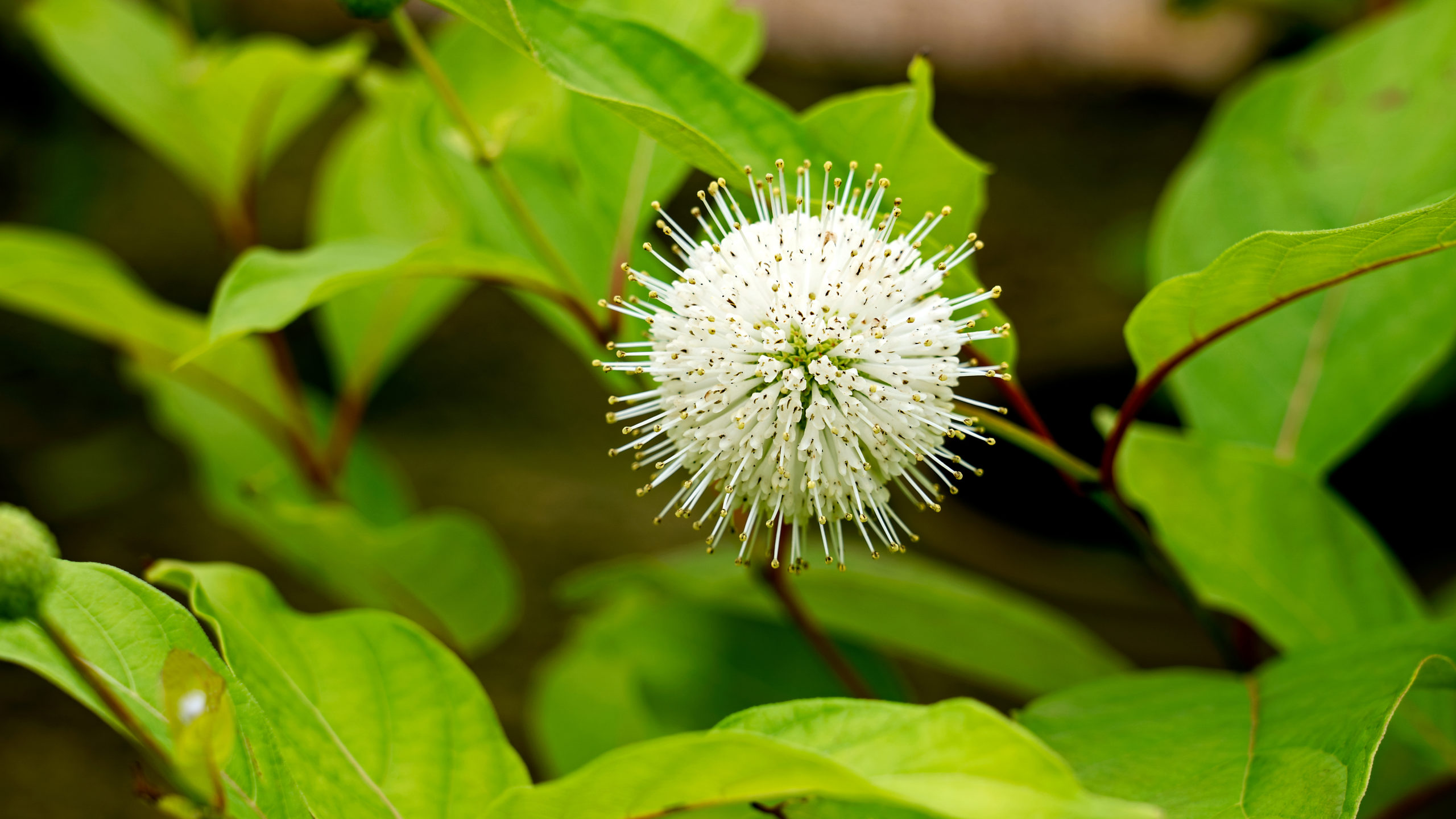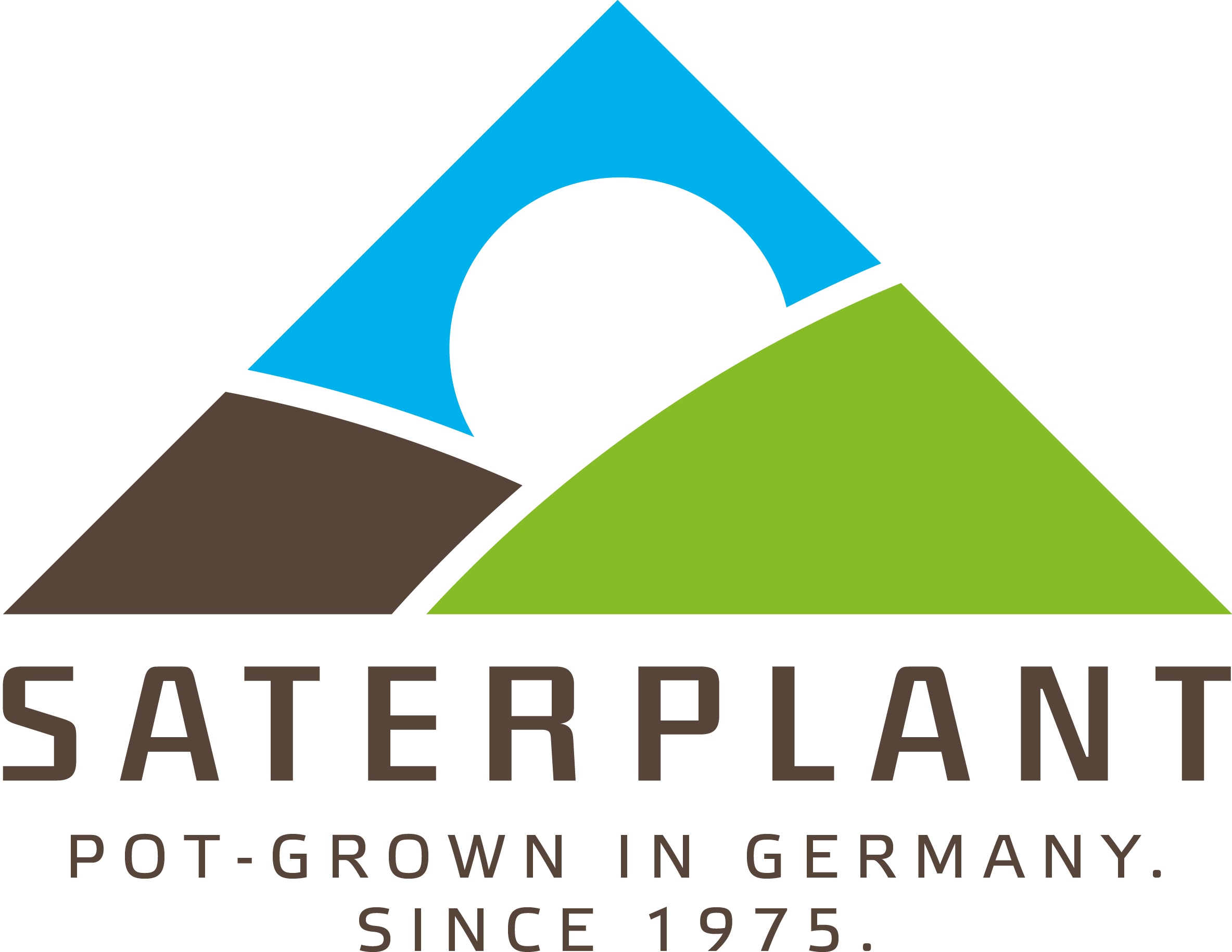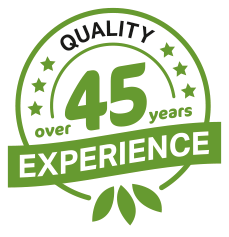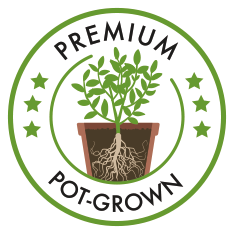Four arguments make the Honey Bell a unique addition to your garden:
• It magically attracts bees and bumblebees.
• It provides insects with the best nectar.
• It flowers beautifully.
• It is frost-hardy to -25°C.

How will the Honey Bell develop with you?
The bush will grow and thrive peacefully with you – up to a height of 150 to 200 cm with a maximum diameter of 130 cm. A sunny to semi-shady spot is ideal for your Honey Bell – and it also does well in wetter soils. Its unique flowerballs will delight you between July and August! The summer blossoms of the Honey Bell consist of spherical flowerheads, which consist of a good 80 white tubular flowers. The stamens with their yellow pollen protrude from them and give the spherical flowers a soft silhouette.

What care does the Honey Bell need?
- The location for your Honey Bell should be sunny to partial shade.
- Please note: Your Honey Bell is not suitable for human consumption.
Watering and Fertilizing
The water requirement of the Honey Bell is relatively high. In moist locations, normal rainfall is usually sufficient. In summer, or if it is persistently hot and dry, you should water it.
If cultivating in a tub, please water it constantly and regularly, especially in summer.
In addition to watering, make sure that the plant is supplied with sufficient nutrients. Specimens in the garden are optimally supplied with plenty of compost. This should be applied 1-2 times a year, for example in March and June.
During the growth period, please provide potted plants with a liquid fertilizer about every fortnight. – A single application of a slow release fertilizer is also possible.
Pruning
Pruning is particularly advisable if the plant has already become very overgrown. Denser branching is preferable or the plant’s willingness to flower is diminished. If individual flowerballs start to bloom, cut them off. Your Honey Bell will immediately channel its energy into the growth of new flowerballs.
Depending on the aim of your pruning, the Honey Bell can be cut back or simply trimmed into shape. Individual shoots as well as the entire shrub can be pruned before budding. Radical pruning is even possible down to just a few nodes (= growing points on the plant). Otherwise, remove dead, withered and diseased shoots at the base. If the structure is too dense, old wood can also be removed if necessary.
Tip: The Honey Bell is also suitable for growing as a standard, ideally using a young plant. This should have a straight, strong central shoot that can be used as the main stem.
Benefits for Wildlife
Waterfowl and other birds will eat the seeds from your Honey Bell. Breeding ducks use the plants to protect their nests, deer eat the foliage. Our Honey Bell is classified as a bee pasture, so it serves as a good nectar source and is suitable for butterfly gardens.
Our Honey Bell is used as an ornamental plant in parks and gardens because of its attractive appearance. In semi-natural landscaping, it is used for its support in erosion control.
Incidentally, our Honey Bell is also known for a number of historical medical uses.
Our Conclusion
The Honey Bell is an absolute rarity and an attractive eye-catcher, both in the garden and in the tub. It looks good as a single plant or in groups, combines well with other perennials or in borders, blends excellently into Mediterranean gardens or water gardens, and in containers adorns balconies and terraces. To enjoy the filigree flowers for many years, make sure they are well watered and nourished, and thin out or cut back occasionally.
Thank you for your attention and we hope you enjoy your new Honey Bell. The Team at Saterplant.
PS: If you still have some questions, the Saterplant team will be happy to help you personally, whether before or after purchase: by email at info@saterplant.de or from Monday to Friday between 7.30am and 5pm on +49 (0)4492 913799-0.




